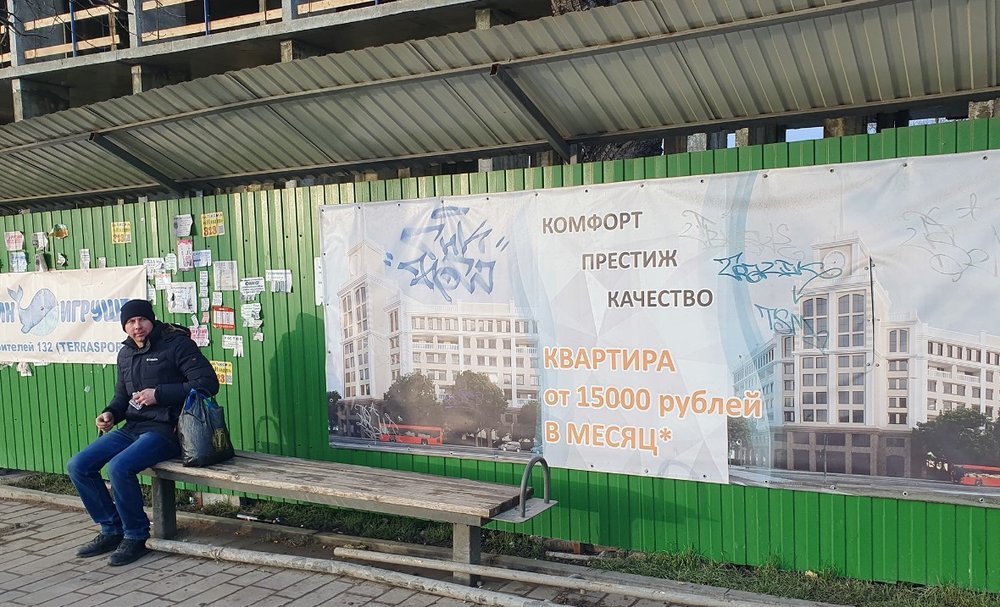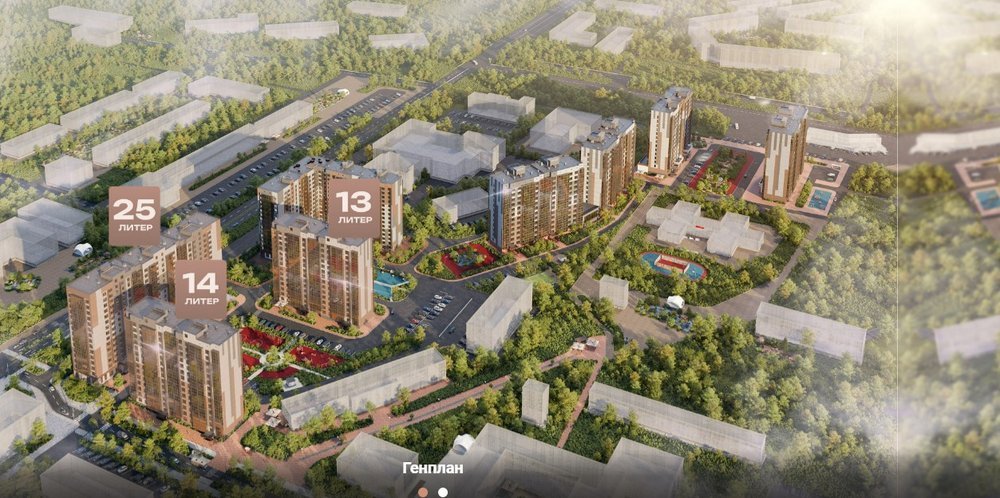Colonization: How Russia encourages its citizens to settle down on the occupied territories
After the occupation, a real stream of various "liberators" came to the Russian-occupied territories. The distribution of money for participating in the war against Ukraine allowed residents of subsidized regions to escape desolated dying Russian monotowns to some warmer and more vivid places, even despite the war.
"We never had much work, it wasn’t a major problem. But you came to the city and everything was tiled, green, and cozy. Of course, their jaws dropped as they lived in shantytowns. That’s why they desire to move here. They come with whole large families, both young and old. Often you can’t tell that they are typical Russians judging from their appearance. But they have many different nationalities living there," a former resident of occupied Tokmak told us.
As the interviewee says, it happens that newcomers move into houses abandoned by their owners. But if you do manage to arrange a sales contract, you can get a fairly large sum for your house.
Even the occupation authorities admit that no construction has taken place in the occupied districts of Zaporizhzhia and Kherson regions since the occupation. This announcement came directly from Marat Khusnullin, the deputy head of the Russian government responsible for construction. Meanwhile, the demand for real estate is quite high, likely driven by new colonizers.
According to announcements in local telegram channels, the price of a three-room apartment in Berdiansk today ranges from $55,000 to $90,000 or more, depending on the location. A two-room apartment is priced between $40,000 and $50,000, and a one-room apartment costs between $25,000 and $35,000.
In Melitopol, the price of a one-room apartment fluctuates from $20,000 to $40,000 or higher, and a three-room apartment is priced from $55,000 to $80,000. Meanwhile, there are virtually no offers available for sale.
However, it would be a mistake to believe that the Russian state does not coordinate the movement of Russians to the Ukrainian south. As it was 500 years ago, Moscow is very clearly and unmistakably pursuing a policy of ousting the native population from their hometowns.
Mortgage perk
In 2023, the Russian government extended the mortgage perk for purchasing real estate in the primary market to the occupied regions. The rate is only 2% per annum. At this rate, you can take out a loan totaling up to ₽6,000,000 with a down payment of only 10% of the property value.
Conversely, in the regions of Russia where the perks were previously in effect, the situation is less promising. For example, to buy a home under a perk program on the outskirts of St. Petersburg, you need to make a down payment of 30%, and the loan rate will reach 8%.
It is worth recalling that some housing was built only in Mariupol during these several years of occupation. Therefore, purchasing housing in the primary market is possible only in this occupied Ukrainian city. Purchasing it will not be feasible for everyone.
The idea of mortgage perks has proven an excellent tool for promoting Russian colonization aspirations. A resident of the “ungraspable” Siberia or the eternal Non-Black-Earth region got a great opportunity to move closer to the sun and the sea. Where is asphalt, no need to fly to the hospital by helicopter.
Of course, this is facilitated by favorable mortgage terms. At the same time, developers also got a great opportunity to make money from government subsidies. In fact, it was a win-win situation for everyone. Not counting... the people of Mariupol left behind in this scheme.
Firstly, most Mariupol residents do not have the funds for a down payment on real estate, even if it is as low as 10%. As Russian propagandists stated, the unfortunate citizens could not move into the housing provided to them because they simply had nothing to furnish it with.
Secondly, a mortgage is a mortgage, and it must be arranged via Russian banks, where you need to show your credit history, which current residents of Mariupol also do not have.
Another condition for any mortgage is that the borrower is permanently employed. However, Mariupol faces a severe scarcity of job opportunities. As one YouTuber from our previous investigation said, mowing grass has also become profitable.
As a result, the local population was effectively cut off from any opportunity to buy a home in the city that no longer belonged to them.
Destroyed and rebuilt for countrymen
However, more and more opportunities are opening up for newcomers to Mariupol.

Clock house. Perhaps the symbol of the Kremlin's current colonization policy in the occupied territories is the clock house. This building was one of the most recognizable tourist attractions in Mariupol. During the Russian shelling of the city in 2022, it was partially destroyed. The building could have been restored, and the Russians even announced plans for reconstruction, yet it all ended with the historic building being demolished and replaced by a new Russian residential high-rise.
Of course, there was no room for Ukrainian Mariupol residents. The apartments in this building were quickly snapped up, even though one square meter cost ₽115,000 (approximately $1,300). For example, a 30-square-meter studio apartment would cost about $40,000.
A common Mariupol resident who has lost everything cannot afford to pay such money.
82 Nakhimova Street House. This is another newly built house. It has been rebuilt, but its apartments were reported to be sold via a mortgage perk.
It is a great surprise to the residents of the house that stood in its place that Russian bombs have not hit it yet. The previous one had been badly damaged by fire, and a new house was eventually said to be built for its residents to live in.
However, the residents of the destroyed house may have forgotten a simple truth: "Never, under any circumstances, trust the occupiers." They will always deceive you. It happened this time, too. The new building was indeed built (why waste space in the city center), and its apartments were immediately put up for sale, with a mortgage perk.
Mariupol residents were discontent with this course of events, they even organized something like a picket, recorded a video message... And that seems to be the final point. New residents moved into the new apartments.
Leningradskyi Quarter. The previous new buildings may have been a mere reconnaissance before a real large-scale project planned to be implemented in Mariupol. The Leningradskyi Kvartal apartment complex is at issue. The developer's website outlines plans to construct a total of eight buildings, each between 12 and 15 floors in height.

There is some reason to believe it is not the limit of this developer's plans. “We visited the site of the Leningradsky Kvartal apartment complex, where you can buy housing at a mortgage rate of 2%. The developer plans to build 15 high-rise buildings with an area of more than 137.5 thousand square meters on almost 17 hectares. A total of 2329 apartments,” wrote the tireless Deputy Prime Minister of the Russian Federation Marat Khusnullin during his recent visit to Mariupol.
As was anticipated, this huge construction complex is planned to be built not somewhere in the fields outside the city, as was done for those lucky ones who managed to snatch some apartments to replace the destroyed ones, but in the city center. The "liberators" did a good job of clearing the area of old buildings for new housing and residents.
Nevskyi apartment complex. However, anyone who thinks that the well-publicized construction projects are designed for Mariupol residents displaced by the commercial and colonizing influx of “deep” Russians is mistaken.
For example, we can take the most publicized by propagandists apartment complex Nevskyi. As Texty.org.ua has already written, various celebrities and propagandists often come here. Vladimir Putin, the authoritarian leader of Russia, visited it personally. It seems that this complex was supposed to be a symbol of the occupation authorities' care for the "new citizens".
However, if you visit the developer’s website, OSS LLC, you'll see that this so-called propaganda complex, supposedly built for homeless Mariupol residents, was actually constructed on nearly the same site as two other buildings. The apartments in those buildings were not intended for the local residents but were meant to be sold.
According to the company's website, the price of real estate there is quite high, starting at ₽110,000 per square meter. Not unexpectedly, only those who pay with a "ringing coin" will be able to live in the new houses.
Center with no "natives"
The above locations of new construction projects have one thing in common. They are all located in the central part of Mariupol. Thus, there is a fairly clear trend in the city — real estate is sold in the center, and therefore, the bulk of Russians will settle there.
"An unexpected (!) problem arose in the historic center of the city. The remaining (!) residents and the new administration began to ask to preserve it as much as possible in its original form. And the center suffered a lot because battles took place there," says Khusnullin, the same Russian official. Texty.org.ua quotes his speech deliberately so that readers can fully appreciate the way the Russian official expresses himself.
In general, the city center seems to continue to change as the occupiers plan as long as they stay there. And there will be fewer and fewer local residents. Instead, Russians will live in new apartments purchased with mortgage perks.
History repeats itself like 500 years ago after the Russians destroyed Kazan when local residents were forbidden to settle within "30 miles" of the city rebuilt by the Russians after the destruction they caused.
By the way, the Russians also plan to widely confiscate the property of Mariupol residents who will not have time to confirm their rights by the end of the year. "Those buildings whose owners do not come forward by the end of the year will be recognized as ownerless and transferred to the balance sheet of the municipality," Khusnullin said.
One more thing. In April of this year, the Russian government decided that the flow of Russians to the occupied territories should be further enhanced. Moreover, it will extend the mortgage perk at a rate of 2% to the secondary market. The government has explicitly defined who can apply for such perks. These people are combatants and veterans who took part in the war against Ukraine (the so-called Special Military Operation) as well as employees of federal authorities, social services, and healthcare. In other words, it is the entire occupation administration.
The logic of such steps is simple and clear. They aim to increasingly "pump" the occupied regions with its citizens — not just ordinary citizens, but ideologically motivated — and change the demographic makeup. Russia has been using such tools for hundreds and hundreds of years. A foreign traveler who visited Kazan only a few decades after its destruction left a description of its population (Muscovites) and for some reason did not mention its former inhabitants, the Tatars. By that time, they were no longer there.

